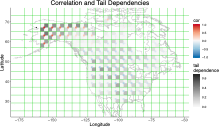Argonne National Laboratory has been awarded $3.6 million from the U.S. Department of Energy to lead a project to improve energy planning for extreme weather and to boost grid resilience.

The multi-institutional project, called CASCDE (Critical Analysis of Severe Climate Events), will combine the expertise of researchers from DOE national laboratories and from the private sector to forecast the likelihood of extreme weather events and their impact on power markets and grid operations.
“Our aim is to understand the benefits and outcomes of potential grid investments and energy market planning that incorporates this information,” said Mihai Anitescu, a senior computational mathematician in the Mathematics and Computer Science division at Argonne and leader of the CASCDE project.
Working with key stakeholders, the CASCDE team will develop and refine tools for assessing climate risk and optimizing grid infrastructure investments for extreme events.
“These tools are critical to building an electric grid that is reliable, flexible and sustainable,” Anitescu said. “By providing decision-makers with the best available knowledge and technologies about extreme climate science, we can ensure that the grid of the future meets our nation’s needs.”
